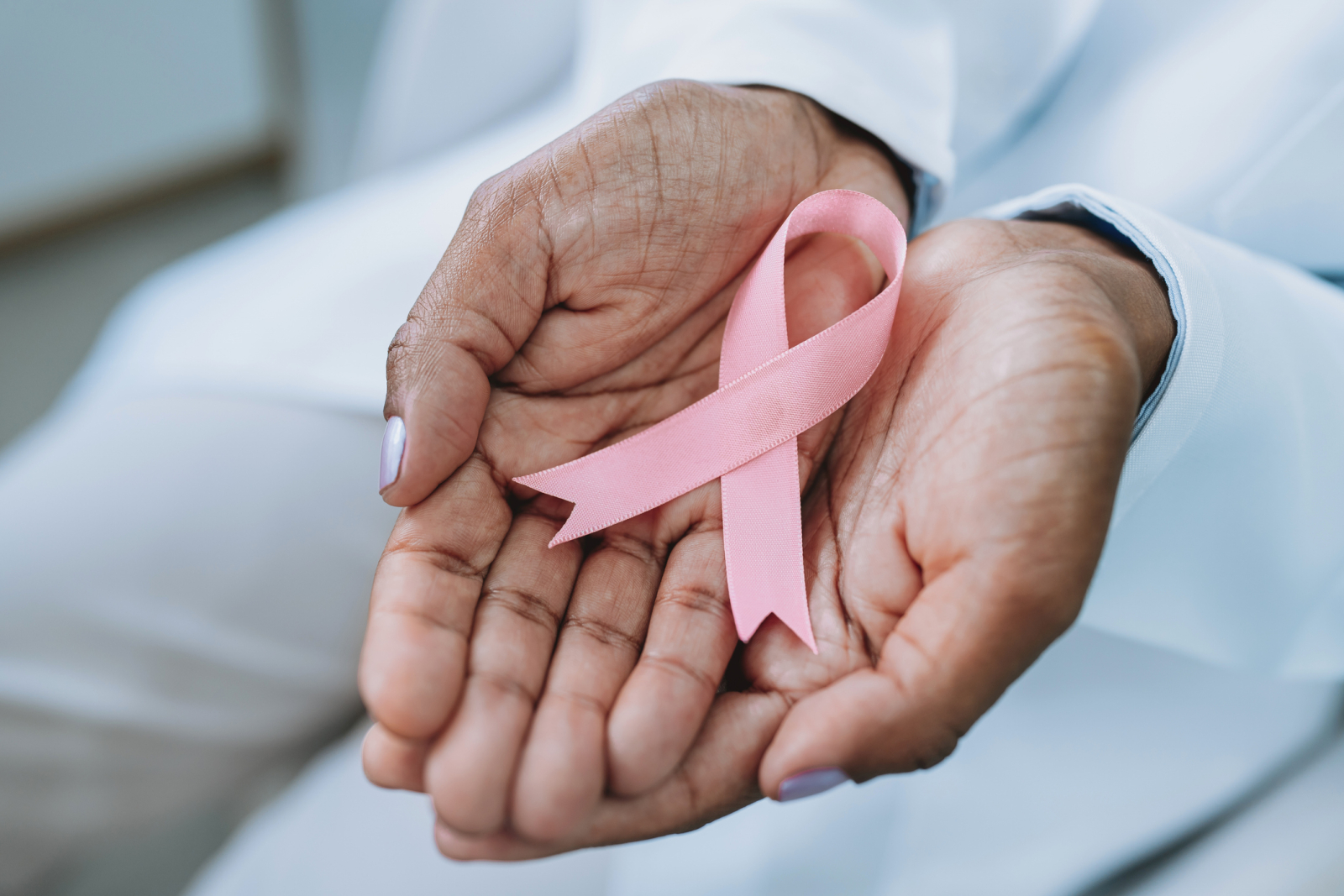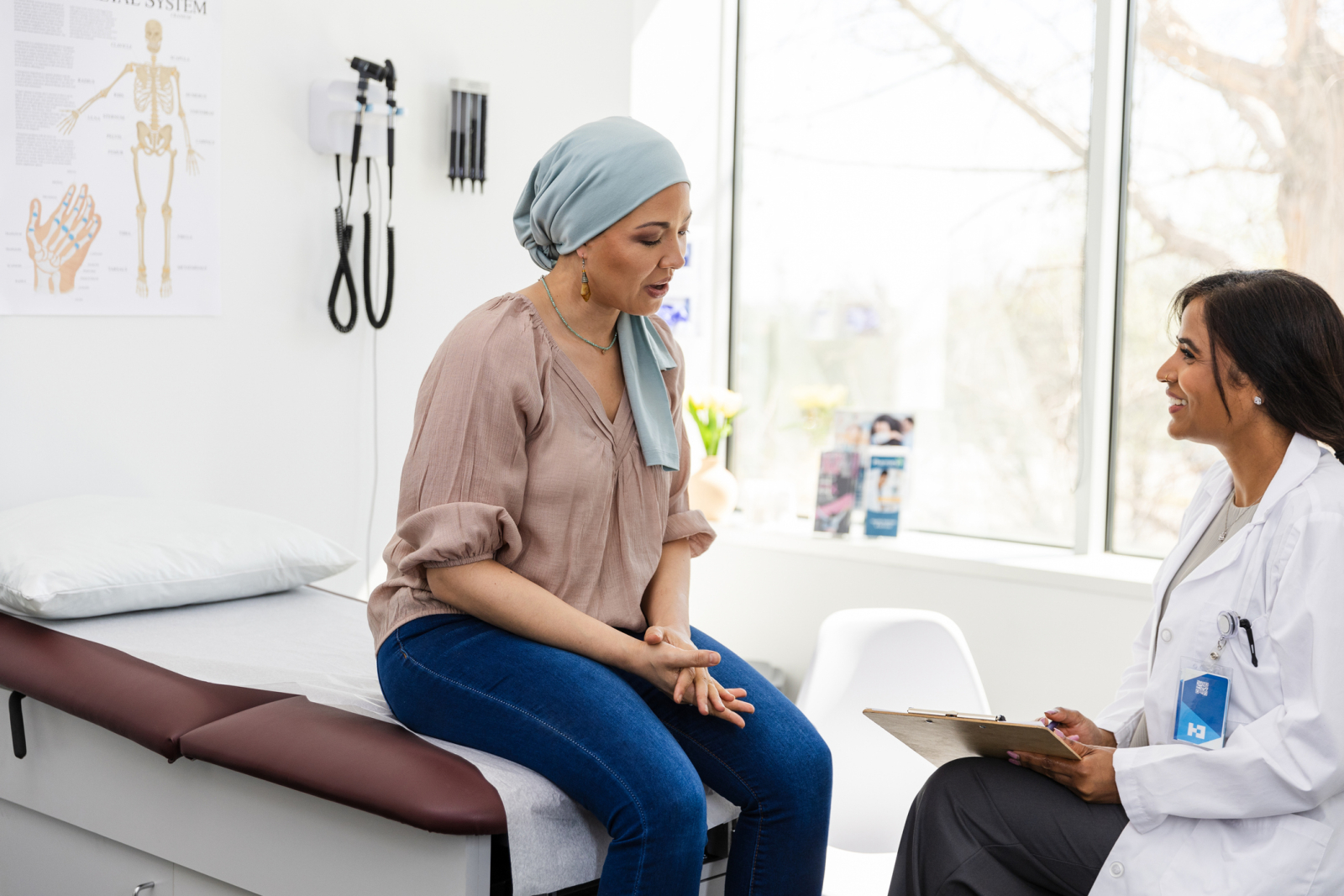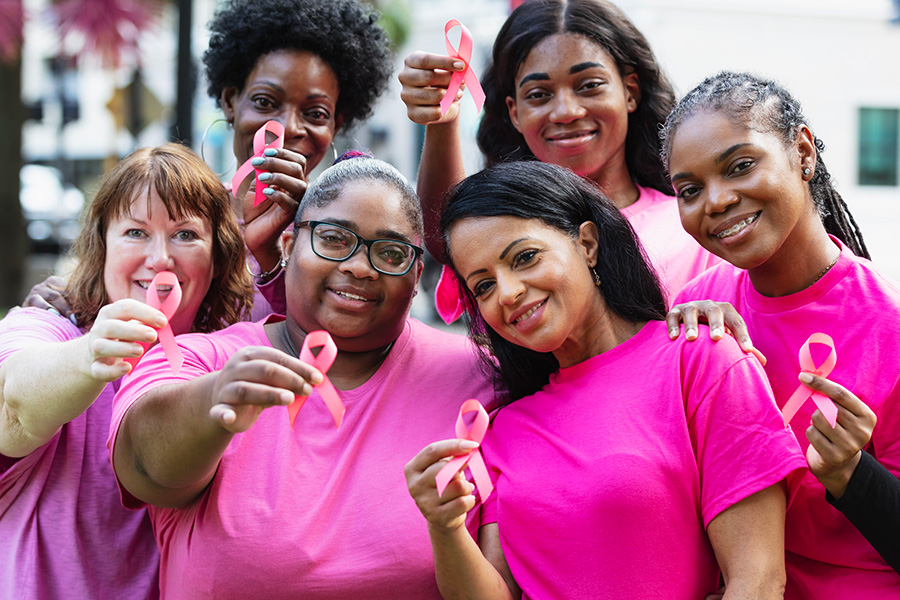Every October, pink ribbons appear everywhere, from social media to storefronts, to remind us that breast cancer awareness saves lives. For many Arkansans, timely breast cancer screening and follow-up care remain out of reach due to cost, transportation limitations, and limited clinical capacity. Health care providers play a critical role in helping patients overcome these challenges. By connecting women with local and statewide resources, providers can improve early detection and reduce preventable deaths from breast cancer.
The Story Behind the Pink Ribbon
Most see the pink ribbon as a universal symbol of hope and awareness. But few know it began as a peach ribbon, created by California resident Charlotte Haley in the 80s after her sister and daughter were both diagnosed with breast cancer. She handed out thousands of ribbons at grocery stores and mailed them nationwide, urging people to demand better funding for breast cancer research.
In 1992, Self Magazine editor Alexandra Penney and Estee Lauder adapted the ribbon for a national campaign, changing its color to pink to make the ribbons pop. The “pink ribbon” soon became the global emblem for breast cancer awareness, symbolizing unity, empowerment, and community.
Why Screening Still Matters in 2025
Breast cancer remains one of the most common cancers among women, but early detection greatly improves survival rates. When identified early, breast cancer has a five-year survival rate of nearly 99%. Despite this, screening rates in Arkansas remain below the national average, especially in rural areas and among women with low income or limited insurance coverage.
Providers can help close this gap by:
- Discussing screening recommendations during routine visits.
- Making referrals to free or low-cost screening programs.
- Educating patients about mobile mammography units and transportation options.
- Normalizing ongoing screening over 40 for women at average risk.

Arkansas-Based Screening and Support Services
ADH BreastCare Program
The Arkansas Department of Health’s BreastCare program provides free or low-cost breast and cervical cancer screening and diagnostic services for eligible women. Providers can refer patients who are uninsured, underinsured, or meet income criteria. Services include clinical breast exams, mammograms, and follow-up testing for abnormal results.
Patients can locate participating providers or local health units on the ADH website or by calling 1-833-639-2942.
Your Cancer Resource Guide
This statewide resource directory, also available through ADH, lists programs that assist patients with costs, transportation, and other needs that may prevent timely care. It includes links to organizations that support various cultural and language groups in Arkansas, as well as national assistance programs that cover travel, rent, or residual medical bills.
Providers can order copies or share the digital version with patients who need help navigating support options.
Mobile Mammogram Units
Several Arkansas health systems operate mobile mammography units that bring screening services to rural communities. These units travel to local health departments, employers, and community events to make mammograms more accessible. Providers can share mobile schedules or refer eligible patients to the nearest upcoming clinic. Mobile programs are typically coordinated through major hospital networks, regional health systems, and the University of Arkansas for Medical Sciences (UAMS).
Regional Treatment and Oncology Services
Comprehensive cancer care is available throughout Arkansas. Treatment centers such as CARTI Cancer Center and regional oncology clinics provide coordinated medical, surgical, and radiation oncology services. Many also offer patient navigation, financial counseling, and genetic risk assessments.Providers can refer patients to centers based on proximity, insurance, and specific clinical needs.
Promoting Breast Cancer Awareness Beyond October
While October is nationally recognized as Breast Cancer Awareness Month, providers can use that momentum year-round to encourage screening and education. Discussing risk factors, genetic testing, and prevention strategies during annual exams helps normalize these conversations and keeps patients engaged in preventive care.’
One mobile unit, aptly named the MammoVan, regularly travels across the state, offering quick screening mammogram services. UAMS started the MammoVan program to enhance access to screening. The MammoVan is staffed with certified mammogram technologists who are ready to provide high-quality screening mammograms. Your results are mailed to you and your primary care physician. If the results show a potential abnormality, you are also referred for follow-up to the appropriate services. Visit their website here for more information on the MammoVan locations and events.
Other Breast Cancer Awareness Resources
There are many ways to support breast cancer research or donate to a local breast cancer fundraiser near you. The Arkansas Cancer Coalition website has a calendar of local events. You can find screening events, breast cancer races, lunch and learns, and women's health education events you can attend during October to show your support.
 Providers can also partner with community organizations or public health programs to:
Providers can also partner with community organizations or public health programs to:
- Host education sessions or screening events.
- Share awareness materials in clinics and waiting rooms.
- Promote upcoming mobile mammography schedules through newsletters or social media.
Turning Awareness into Access
Awareness campaigns and pink ribbons have played an important role in destigmatizing breast cancer. But as health professionals, the next step is turning awareness into access. By helping patients connect with existing resources, like ADH’s BreastCare program, mobile mammography services, and comprehensive treatment centers across the state, providers can remove barriers, improve early detection, and save lives.


